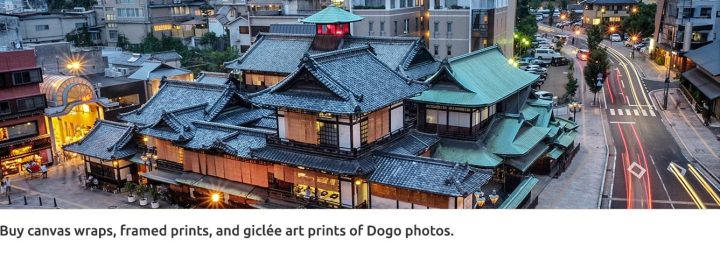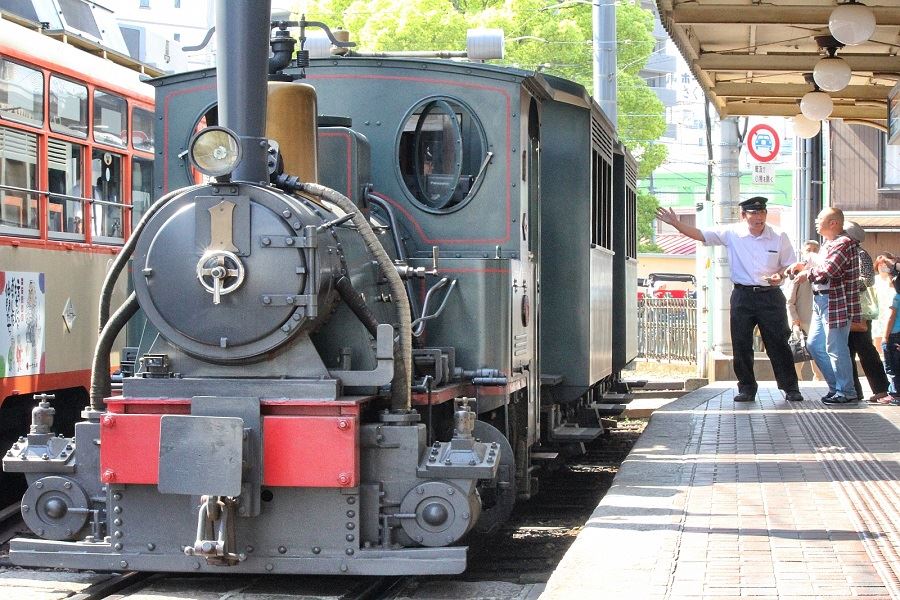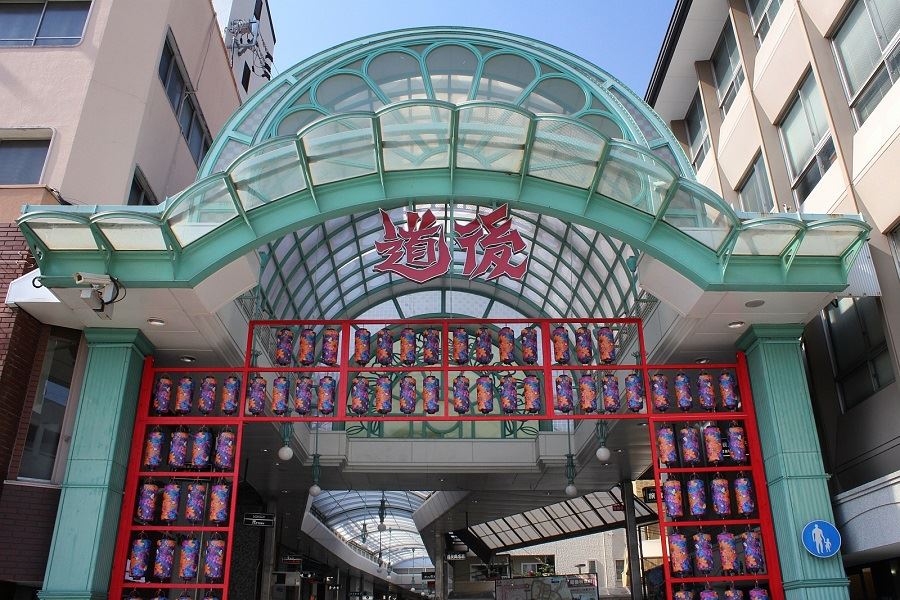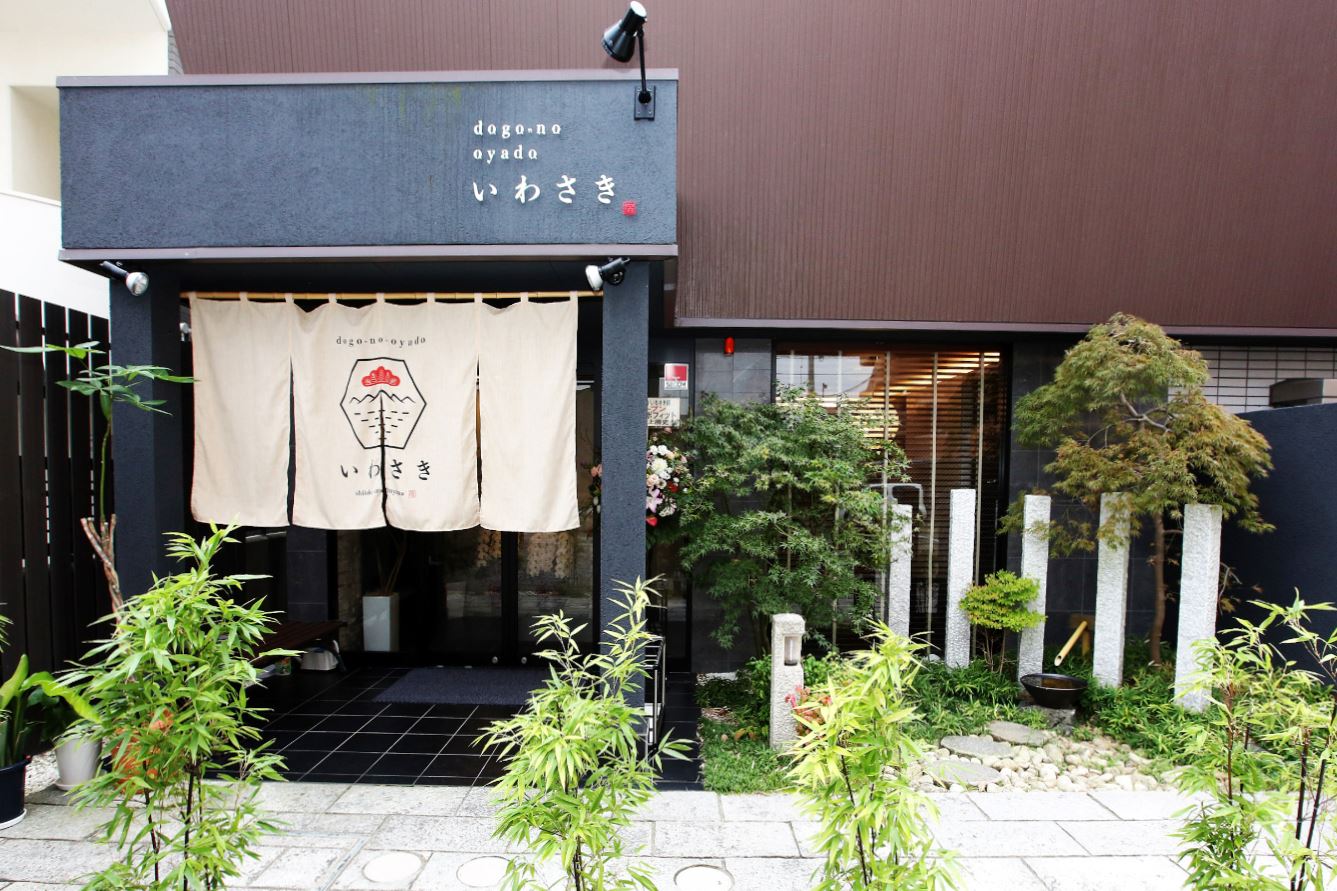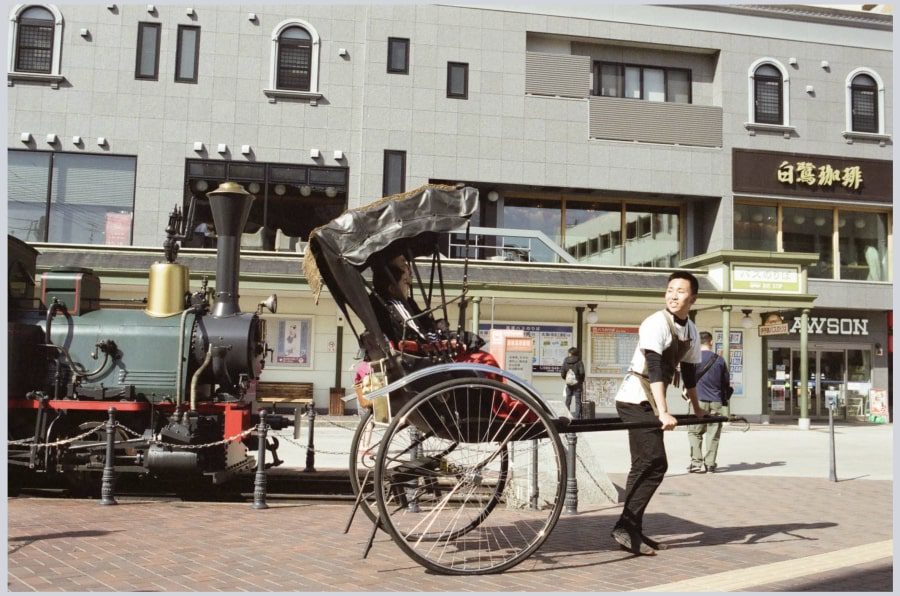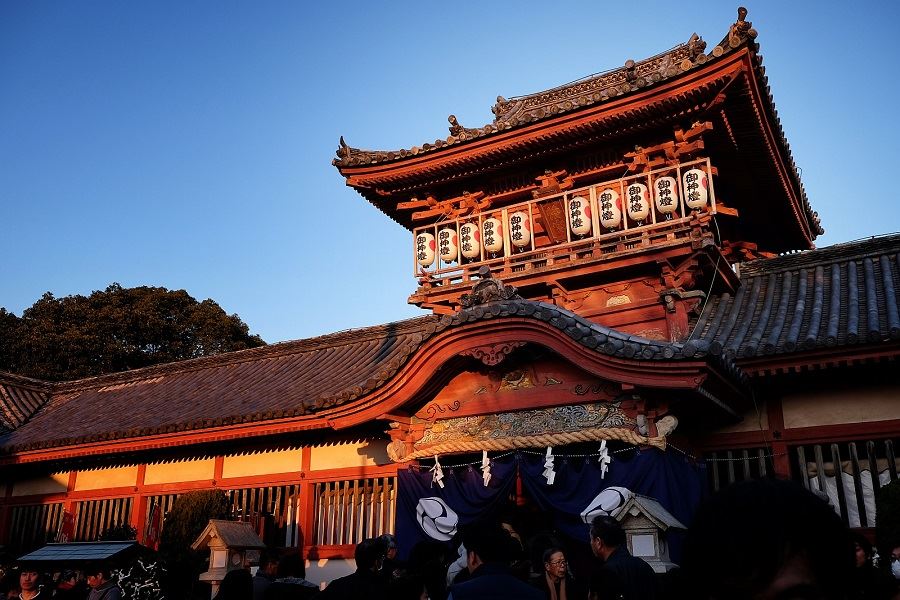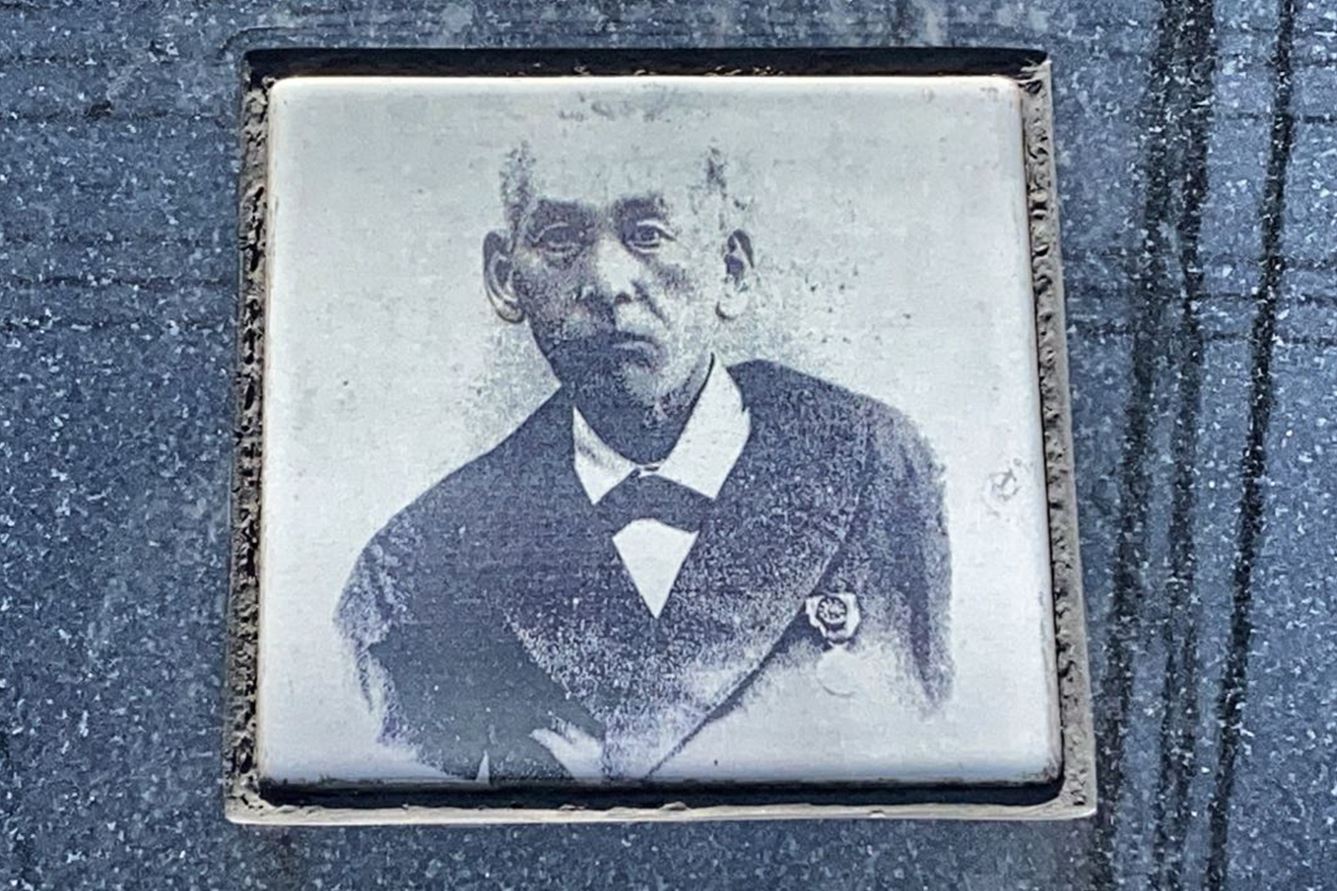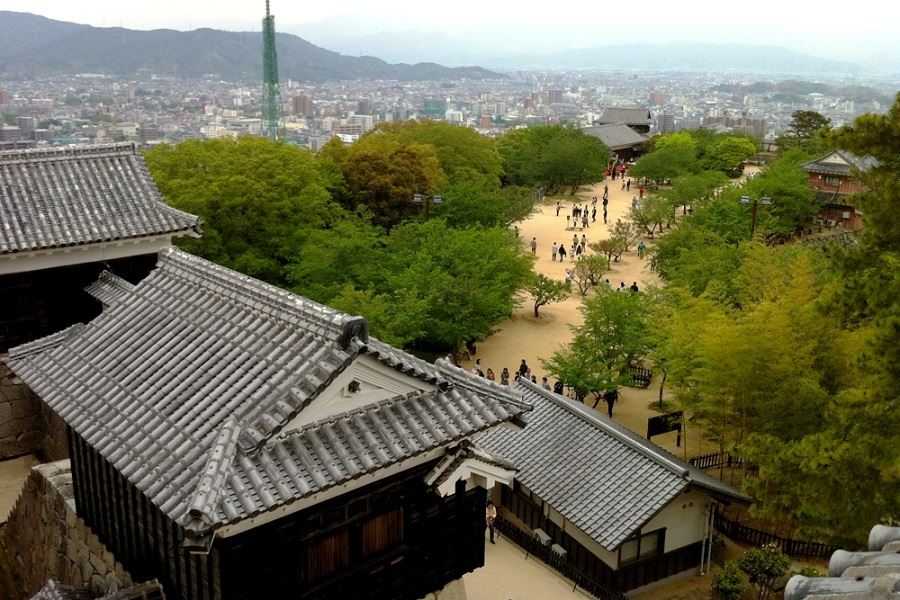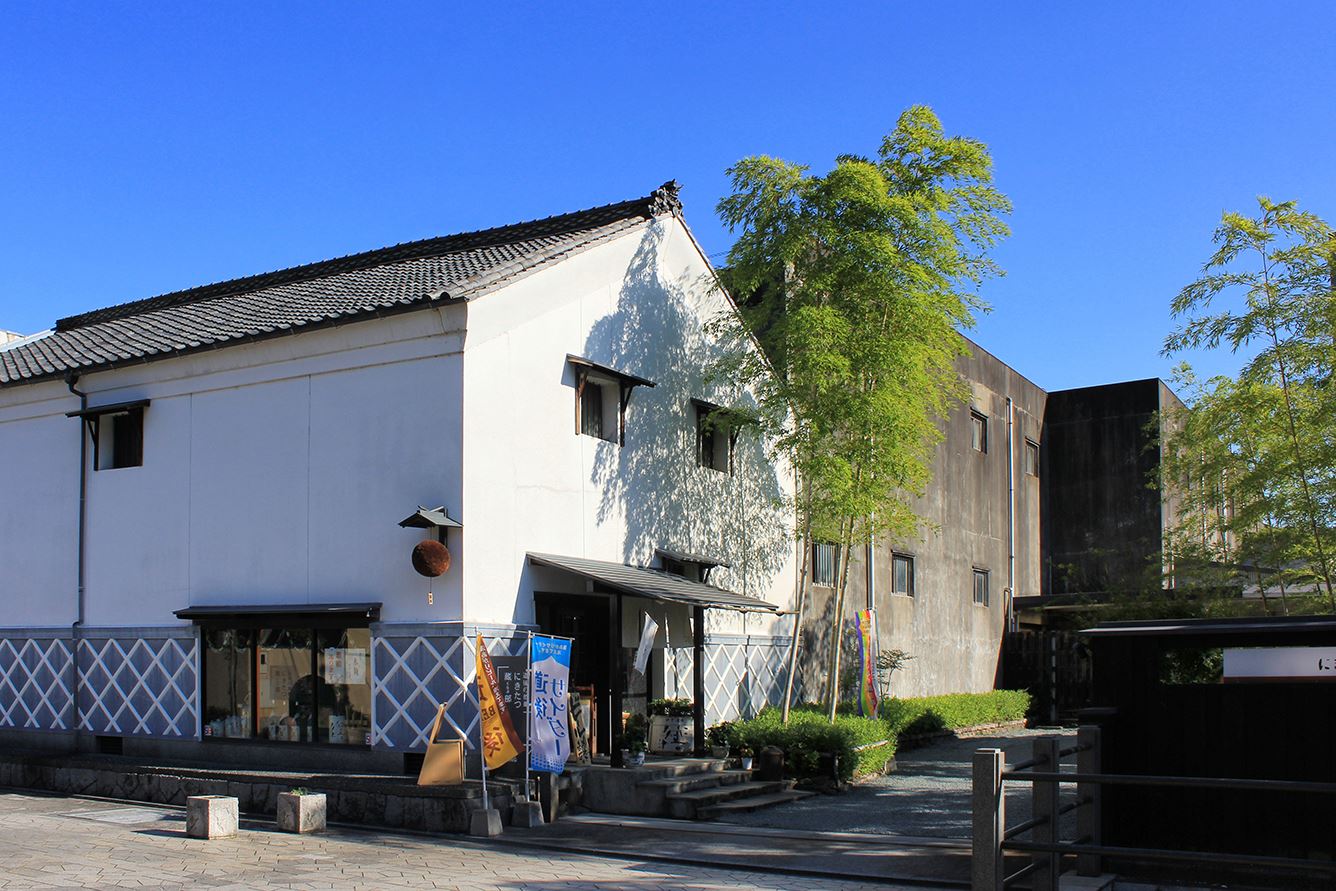Dōgo
Home » Dōgo
Dōgo
Dōgo is a part of Matsuyama, known for Dōgo Onsen, which is said to be the hot spring with the longest history of use by humans in Japan. Dōgo was until relatively recently an entirely separate area from Matsuyama, but development has filled in the space between them. The centrepiece of Dōgo town is Dōgo Onsen Honkan, an elegant Meiji period bathhouse. This charming little self-contained area has the air of a traditional Japanese resort.
Dōgo Onsen
Dōgo Onsen Honkan offers visitors a choice of baths, lounges and refreshments at various prices. You can even have a private room. The baths themselves are very elegant granite basins, and the water is comparatively hot, with a slippery, mineral feel. With the higher-priced options, you can dress in a yukata and enjoy tea and snacks in the tatami-mat lounges. You can go out onto the balcony and look down on the passers-by. If you want to go inside without taking a bath, you can buy a ticket to visit the Yushinden, the Emperor’s elegantly appointed private bathroom. You can hire a rickshaw in front of the Honkan for guided tours of varying lengths.
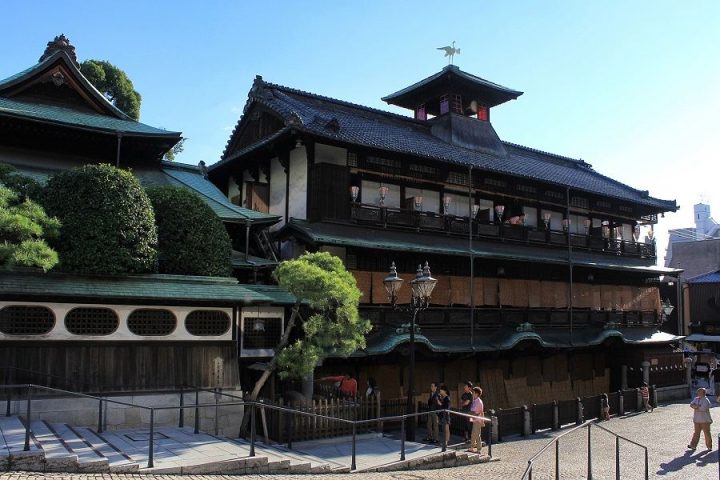
Tsubaki no Yu onsen
At busy times, you may have to queue to enter the Honkan. If you want to avoid the wait, you can visit Tsubaki no Yu, another onsen in Dōgo that has similar granite baths, though with none of the extras of the Honkan. Also, all of the hotels in Dōgo have baths that you can use for a fee. They all offer towels, so you don’t need to go prepared.
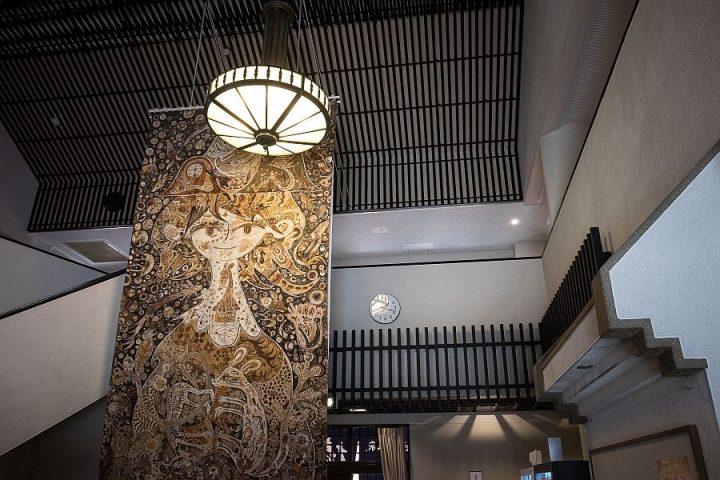
Asuka no Yu onsen
This entirely new hot spring facility is built in the architectural style of the Asuka period of Japanese history (538 to 710). Like the Honkan, there are various grades of luxuriously outfitted bath and lounge, all decorated with local crafts featuring motifs characteristic of Ehime. There’s even a replica of the Imperial bath from the Honkan which you can use (for a price). Between the Tsubaki no Yu and Asaka no Yu bathhouses is a pleasant plaza with a garden of camelias, a fountain that puts on little shows on the hour, and benches.
Dōgo Arcade
Dōgo Arcade, also known as Dōgo Haikara Dōri, runs from Dōgo Station, taking a sharp right at Tsubaki no Yu onsen, and heading up a slight incline to the Honkan. The arcade is a pleasant tourist trap, with shops dedicated to souvenirs and trinkets. But prices are very reasonable, and there are many nice, authentic things to be found. If you’re hungry, the arcade has shops with stalls in front where you can buy hot snacks to fill a gap. There are also ramen and noodle shops, and the very stylish Dōgo no Machiya, a baker’s and restaurant in an old merchant’s house, complete with courtyard gardens. It’s just one of several attractive cafés in the arcade.
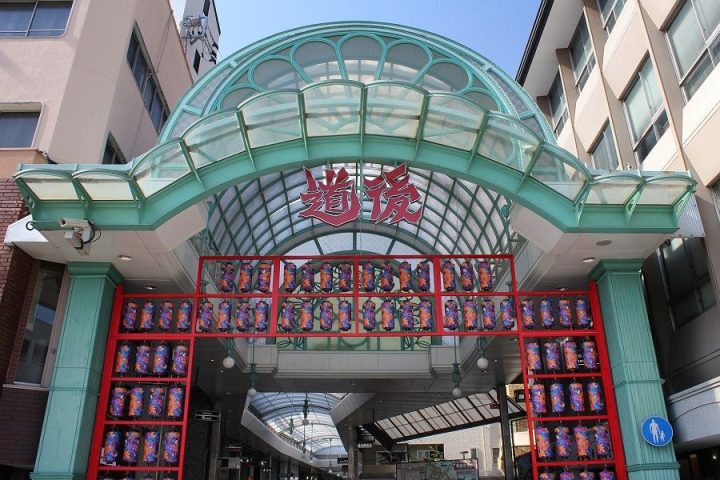
One shop that is bound to catch the eye of visitors is the Studio Ghibli store near the top of the arcade. The Totoro figures outside the shop are no doubt familiar to many people, but there’s much more inside that is likely to be new and rather wonderful. The fantastic creations of Miyazaki Hayao have been worked into useful items such as plant holders which make very desirable gifts.
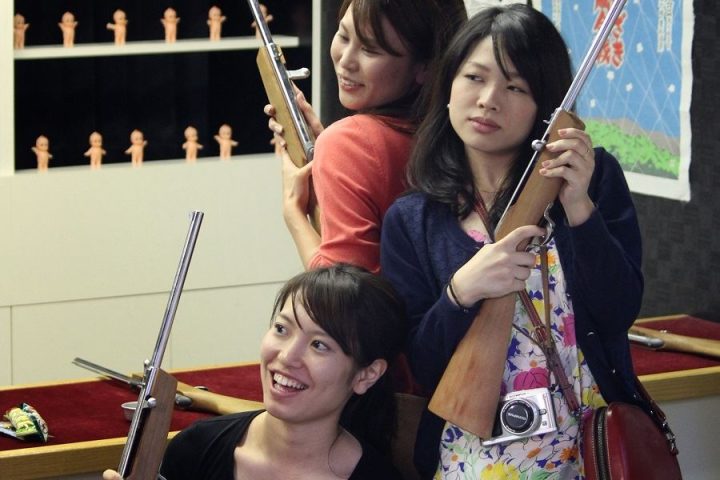
In a little alley off the arcade, you can shoot Kewpie dolls with a pop-gun for prizes. It’s a bit of a scream.
Dōgo Station
Dōgo Station is the terminus for Iyotetsu trams and the Botchan Train. The station, located in a pleasant open plaza, is an accurate replica of the station as it was in the Meiji period, minus of course the Starbucks. Behind the station is a parking area for the 1950s and 60s trams. Here you can also watch the little Botchan Train engine being cranked up on a pivot and turned around by its driver.
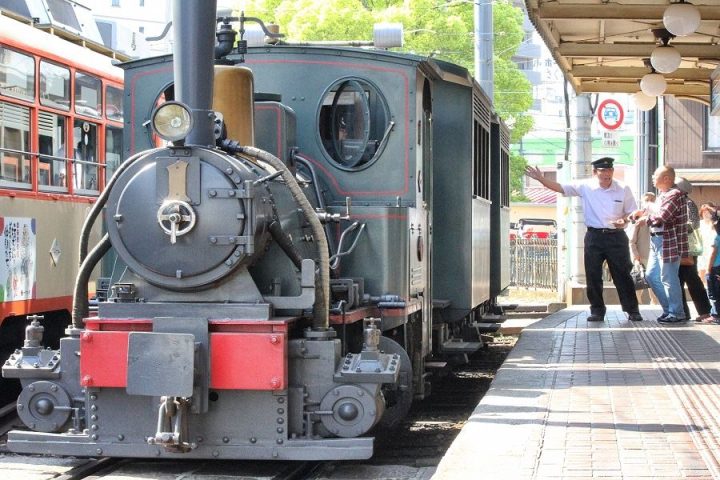
Hōjōen Plaza
The plaza in front of Dōgo Station is called Hojoen. Here you’ll find the Karakuri Clock, which comes to life with scenes from the novel “Botchan” every hour. There’s a free foot spa where you can dip your feet in the waters of the onsen. And there’s a stone Haiku Post box where you can submit haiku in Japanese or English. Rickshaw tours can also be taken from here.
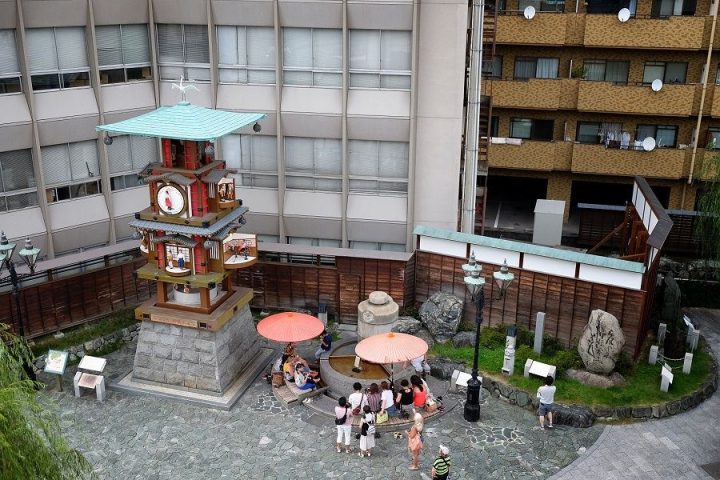
Isaniwa Shrine
As you go up beyond Hojoen, there’s a large torii gate with a road leading steeply up a hill. At the top of the road is an even steeper flight of rough stone steps, topped by a towering vermillion red structure. This is Isaniwa Shrine, which sits above Dōgo offering a fine view over Matsuyama.
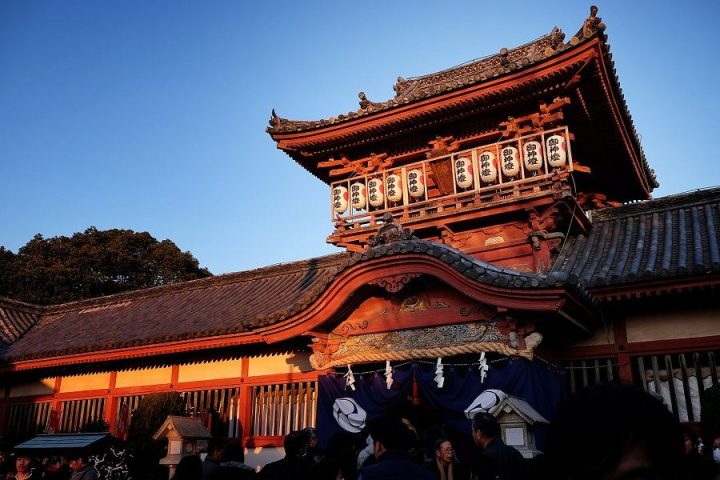
You can enter the shrine freely and walk around the colonnade that encloses the buildings. If you’re lucky enough to be visiting when a wedding is being held, you can glimpse the bride and groom in their kimonos through the bars of the colonnade. Isaniwa Shrine is devoted to the god Hachiman, patron of warriors, and decorating the shrine are several paintings of warriors and warfare, dating from various periods.
The shrine is said to have been founded on the site where Emperor Chuai and Empress Jingu bathed at Dōgo Onsen. The current buildings were constructed in the Hachiman-zukuri style in 1667. The shrine is visually stunning with its red paint, gold leaf, its roofs of cypress bark and tile, and its semi-tropical greenery.
Dōgo Park
Another major attraction of Dōgo is its park. This large green area with its commanding hill and moat was once the site of a castle, called Yuzuki-jo. It was founded by the Kōno Clan who ruled Iyo Province from the site from the fourteenth century. Fortified in the sixteenth century, the castle was destroyed by the army of Toyotomi Hideyoshi in 1585 during the Sengoku period. Its ruins were excavated in 1988, and a little museum cut into the fortifications show some of the archaeological findings. A samurai complex has been reconstructed which houses another fascinating museum.
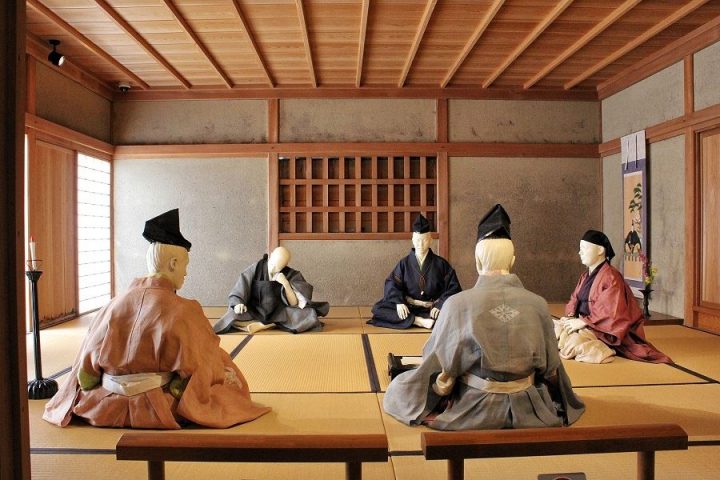
The park is a very pleasant place to explore. Its moat is home to kingfishers which can sometimes be spotted. Climbing the hill affords a splendid view over Matsuyama, including Matsuyama Castle, the successor to Yuzuki. The park is planted with cherry trees which blossom pinkly in April.
Minakuchi Sake Brewery
Minakuchi Brewery is a sake brewery that dates from the early Meiji period. It’s located in a charming paved street off Dōgo Arcade. The brewery produces the Nikitatsu brand of sake, and Dōgo Beer. In the brewery shop, you can try the beer and sake, and browse the collection of attractive souvenirs. Inside the brewery are various exhibits about sake making.
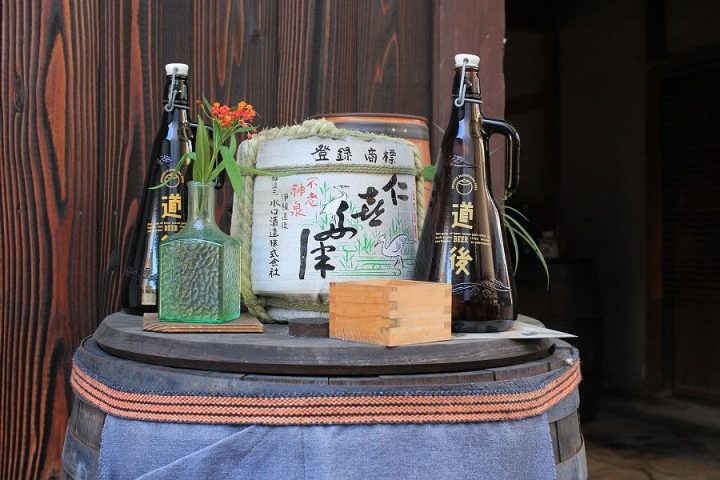
Sagidani Graveyard
In this graveyard on the hillside behind the Honkan lie several key historical personages such as Isaniwa Yukiya, the mayor of Dōgo who had the Honkan built, and Akiyama Yoshifuru who led the Japanese cavalry to victory in the Russo-Japanese war. The graveyard offers a fine view of Matsuyama, and it’s also home to numerous cats.
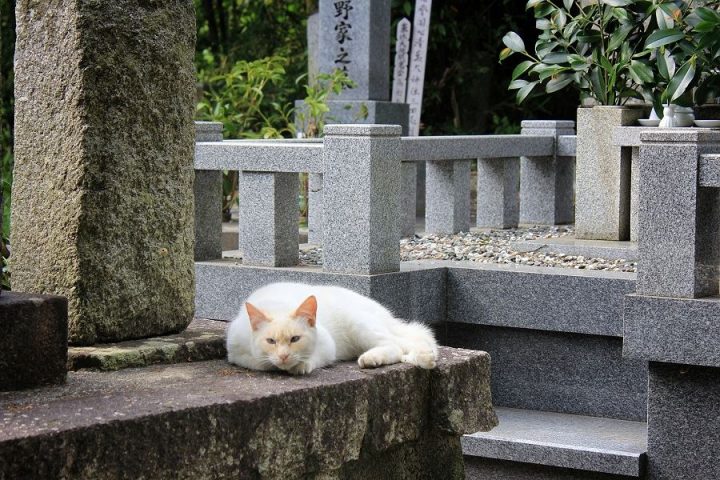
Giyaman Glass Museum
‘Giyaman’ is a corruption of the word ‘diamond’, and the glass on display takes its name from the variety of deeply cut glass that sparkles like diamonds. Besides sparkling cut glass, there are glass tobacco pipes and smoking paraphernalia, a bird cage with tiny glass bars, insect cages for keeping chirping insects in summer, and even pillows of blue glass. Every example is exquisite. There are extraordinarily thin, colored sake cups and gourd-shaped flasks for sake. In the old days when sake was the only alcoholic beverage of the Japanese, the care lavished on its presentation was extreme.
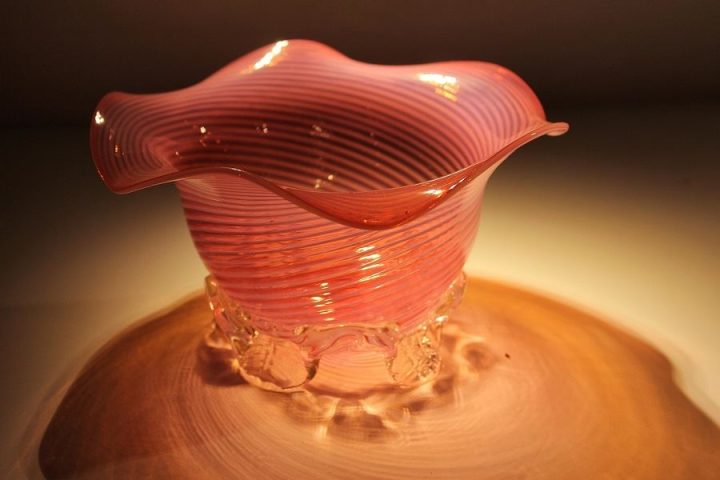
Some of the other displays included the various types of glass used in Dōgo Onsen Honkan, most notably the red glass of its tower. There are also animals—chickens with their eggs, fish, and some cicadas. The glass, gathered from all over Japan, is from the Edo, Meiji and Taishō periods. Life in those times must have been austere in many ways, but the ‘giyaman’ glass shows that the austerity was tempered by fantastic elegance, for some people at least.
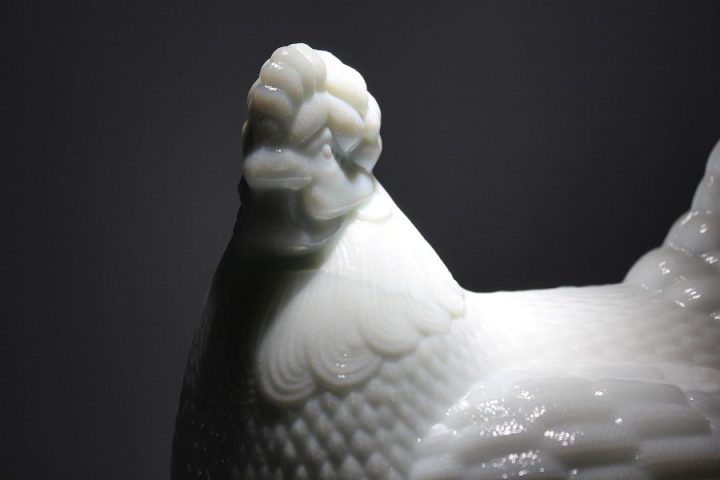
Geisha
Matsuyama is one of four places in Shikoku where you can enjoy geisha entertainment, at much more reasonable prices than in Tōkyo and Kyōto. With sufficient notice, we can arrange for a dinner with geisha at a hotel in Dōgo. This typically involves a course meal with beer and sake. An older geisha provides accompaniment on a shamisen, while one or more younger geisha performs traditional dances, pour drinks, and lead simple but thoroughly amusing games. A geisha party can be enjoyed equally by men and women. This is an ideal option for a larger group or for the MICE segment.
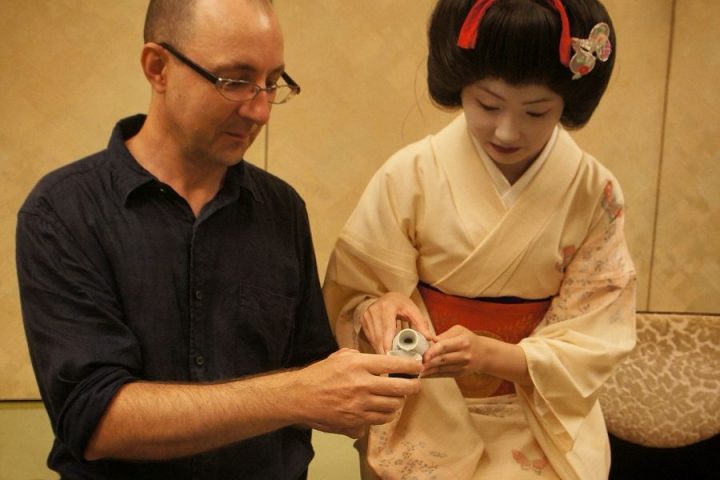
Information
Name in Japanese: 道後
Pronunciation: dōgo
Address: 1 Chome-10-12 Dogomachi, Matsuyama, Ehime 790-0843
Related Tours

Experience the most beautiful and interesting temples of the Shikoku Pilgrimage in seven days.

A tour for families or friends, staying in the most characterful kominka and ryokan of Shikoku.

Visit the most beautiful and interesting temples of the Shikoku Pilgrimage and walk the toughest trails.
